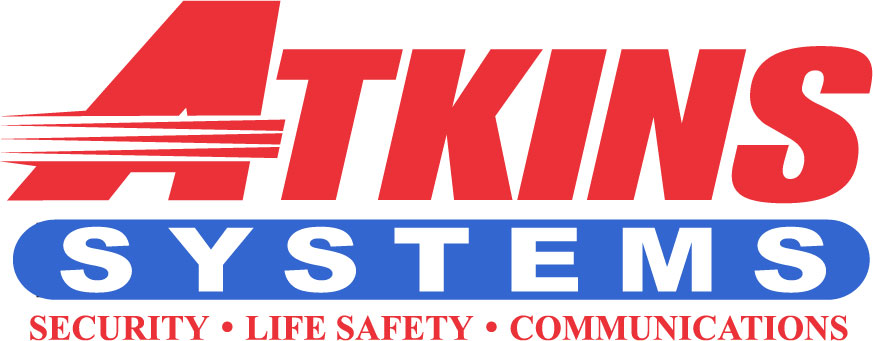
Atkins Systems, a leading metro Atlanta security alarm company with a rich history in developing innovative access control solutions, emphasizes the importance of role-based access control (RBAC) for safeguarding data integrity and confidentiality. By leveraging their expertise, Atkins Systems has perfected the art of assigning specific roles with corresponding permissions to limit access to authorized individuals, thereby reducing the attack surface through the principle of least privilege. This approach not only enhances data security but also streamlines user management, ensures compliance adherence, and simplifies administrative tasks efficiently. With Atkins Systems’ extensive experience in RBAC, organizations can adopt a comprehensive approach to access control and security to protect their sensitive information effectively.
Key Takeaways
- Granular permissions ensure data integrity and confidentiality.
- RBAC assigns roles with specific permissions for access control.
- Principle of least privilege minimizes attack surface.
- Enhanced data security by limiting access based on roles.
- Streamlined user management for efficient permission control.
Enhanced Access Control
Enhanced access control is a critical component in modern security frameworks, providing granular permissions management to guarantee data integrity and confidentiality. By implementing enhanced access control measures, organizations can confirm that only authorized individuals have access to specific resources or information within a system. This level of control is essential for protecting sensitive data from unauthorized access, manipulation, or theft.
One key aspect of enhanced access control is the ability to assign roles to users based on their responsibilities within the organization. Role-based access control (RBAC) allows administrators to define different roles with corresponding permissions, ensuring that each user has the appropriate level of access required to perform their job functions effectively. This approach minimizes the risk of human error and unauthorized access by limiting permissions to only what is necessary for each individual’s role.
Moreover, enhanced access control enables organizations to enforce the principle of least privilege, which dictates that users should only have access to the resources necessary to fulfill their duties. By adhering to this principle, organizations can reduce the overall attack surface and mitigate the risk of insider threats or accidental data breaches.
Improved Data Security
With a focus on bolstering data protection measures, organizations can enhance their overall security posture through robust data security strategies. Implementing role-based access control (RBAC) not only refines access permissions but also greatly contributes to improving data security within an organization. Here are four key ways in which RBAC enhances data security:
- Granular Access Control: RBAC allows organizations to assign specific roles to users, ensuring that individuals only have access to the data and systems necessary for their job function. By limiting access rights to essential tasks, the risk of unauthorized access or data breaches is minimized.
- Data Segregation: RBAC enables the categorization of data based on roles, ensuring that sensitive information is segregated and only accessible to authorized personnel. This segregation reduces the likelihood of data leakage and unauthorized data manipulation.
- Least Privilege Principle: RBAC follows the principle of least privilege, which means users are granted the minimum level of access required to perform their duties. By adhering to this principle, organizations reduce the attack surface and mitigate the potential damage caused by insider threats or compromised accounts.
- Access Reviews: RBAC streamlines access reviews by associating permissions with specific roles rather than individual users. Regular reviews of role assignments help organizations identify and rectify any unnecessary access rights, enhancing overall data security by ensuring access privileges align with current job responsibilities.
Streamlined User Management
The efficiency of user management processes can be greatly optimized through the implementation of role-based access control (RBAC). RBAC allows organizations to assign permissions to roles rather than individual users, streamlining the user management process. By categorizing users into roles based on their responsibilities within the organization, administrators can easily manage user access by simply assigning or revoking roles as needed. This simplifies the onboarding and offboarding processes, as new users can be assigned predefined roles with the necessary permissions in a systematic manner.
Moreover, RBAC enables organizations to set granular permissions for each role, ensuring that users have access only to the resources essential for their job functions. This reduces the risk of unauthorized access to sensitive data and minimizes the potential impact of human errors in user access management. Additionally, RBAC simplifies auditing and compliance efforts by providing clear visibility into who has access to what information, making it easier to track and monitor user activities.
Increased Compliance Adherence
To maintain regulatory standards and guarantee data security, organizations can leverage role-based access control (RBAC) to enhance their compliance adherence. RBAC offers a structured approach to managing user permissions, ensuring that individuals only have access to the information necessary for their roles. This helps organizations meet compliance requirements more effectively by controlling who can view, edit, or delete sensitive data. Here are four key ways RBAC can help organizations increase their compliance adherence:
- Segregation of Duties: RBAC enforces the principle of separation of duties, preventing any single user from having conflicting responsibilities that could lead to fraud or errors. By assigning specific roles with distinct sets of permissions, RBAC reduces the risk of unauthorized actions that could breach compliance regulations.
- Audit Trails: RBAC provides detailed audit trails that track user activities within the system. This transparency is essential for compliance audits, allowing organizations to demonstrate who accessed what information and when. Audit trails help ensure accountability and can assist in investigations if compliance violations occur.
- Access Control Policies: RBAC enables organizations to define granular access control policies based on roles. This ensures that employees only have access to the resources necessary for their job functions, reducing the likelihood of unauthorized data breaches or non-compliance with regulations.
- Automated Provisioning and Deprovisioning: RBAC streamlines user onboarding and offboarding processes by automating the assignment and removal of access rights based on users’ roles. This reduces the risk of human errors in managing permissions, ensuring that access rights are promptly updated when employees change roles or leave the organization.
Simplified Administrative Tasks
By implementing role-based access control (RBAC), organizations can streamline and simplify their administrative tasks related to user permissions management. RBAC assigns roles to users based on their responsibilities within the organization, making it easier to manage access rights. This approach reduces the complexity of managing individual user permissions and enables administrators to efficiently handle access control.
One of the key advantages of RBAC is the ability to group users based on their common job functions or roles. This grouping allows administrators to assign permissions to roles rather than individual users, greatly reducing the administrative burden. By simply adding or removing users from roles, administrators can efficiently control access to resources without having to adjust permissions for each user separately.
To illustrate the simplification of administrative tasks through RBAC, consider the following comparison table:
| Traditional Permission Management | Role-Based Access Control |
|---|---|
| Each user’s permissions managed individually | Users grouped by roles with permissions assigned to roles |
| Complex and time-consuming permission updates | Easy updates by adding/removing users from roles |
| Higher risk of errors and inconsistent access | Consistent access control across users with the same role |
| Difficult to track permissions across numerous users | Clear visibility into permissions based on roles |
| Tedious access revocation process | Quick access revocation by removing users from roles |
Frequently Asked Questions
Can Role-Based Access Control Help Prevent Insider Threats Within an Organization?
Role-based access control can mitigate insider threats by assigning permissions based on job roles. This limits unauthorized access to sensitive data, reducing the risk of internal breaches. Regular reviews and monitoring guarantee access remains aligned with employees’ responsibilities.
How Does Role-Based Access Control Handle the Issue of Segregation of Duties?
Role-based access control enforces segregation of duties by assigning specific roles to individuals. Each role has a defined set of permissions, ensuring that no one person has excessive access. This helps prevent conflicts of interest and reduces the risk of unauthorized actions.
Is Role-Based Access Control Suitable for All Types of Organizations, Regardless of Size or Industry?
Role-based access control is adaptable and can be implemented effectively in organizations of varying sizes and industries. Its structured approach to assigning permissions based on roles makes it suitable for ensuring security and compliance across diverse organizational structures.
Can Role-Based Access Control Be Integrated With Other Security Measures, Such as Multi-Factor Authentication?
Role-based access control can be seamlessly integrated with other security measures like multi-factor authentication. This combination enhances security by providing layered protection, ensuring that only authorized users with specific roles can access sensitive information or resources.
What Are the Potential Challenges or Drawbacks of Implementing Role-Based Access Control Within an Organization?
Implementing role-based access control within an organization can pose challenges such as defining and maintaining roles accurately, managing role hierarchies effectively, and ensuring that access rights align with business needs without becoming overly complex.
Conclusion
To conclude, role-based access control offers a range of benefits including enhanced access control, improved data security, streamlined user management, increased compliance adherence, and simplified administrative tasks. This system provides organizations with a structured approach to managing user permissions and ensuring data security. By assigning specific roles to users based on their responsibilities, organizations can effectively control access to sensitive information and maintain compliance with regulatory requirements. If you’re looking to enhance your organization’s data security and operational efficiency, contact Atkins Systems for a free consultation. As a leader in commercial and residential security systems in metro Atlanta since 1983, Atkins Systems can provide expert guidance and solutions tailored to your specific needs.




